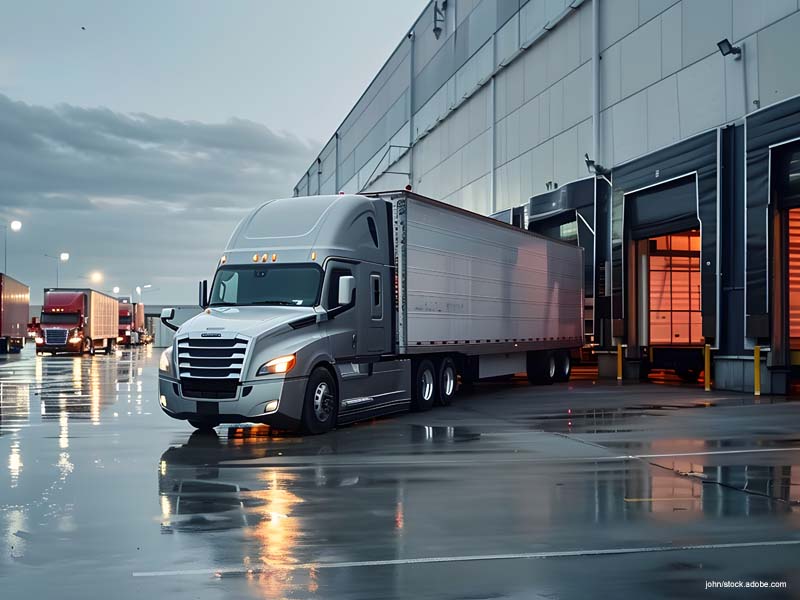A new California law revises first-of-its-kind standards for warehouses. The revision includes truck routes into warehouses.
Sen. Eloise Gomez Reyes, D-Colton, said the rule revisions build on reforms created a year ago. She added that the rules are intended to reduce emission and benefit community health.
Addressing logistics
The 2024 law set comprehensive standards for the siting and operation of logistics developments. Warehouses, distribution centers and other freight operations are covered.
Advocates said new standards are necessary to address the boom in warehouse development in the state. The boom is attributed to the growth of e-commerce and consumer expectations for rapid shipping.
They added that studies correlated the presence of warehouses with negative health effects on nearby communities. Truck traffic associated with warehouses was described as the primary factor.
Guardrails apply statewide
The new standards apply to the logistics industry statewide. However, the reforms are focused on California’s Inland Empire. The region east of Los Angeles is an urban and metropolitan area centered on the counties of Riverside and San Bernardino.
Reyes said there are more than 4,000 individual warehouses occupying about one billion square feet in the Inland Empire. She added that nearly 600,000 truck trips per day are generated by the warehouses.
“Without proper guardrails and a framework for logistics development, this problem in the Inland Empire could be replicated in other parts of the state,” Reyes previously stated.
2024 law
Key provisions in the 1-year-old law include establishment of buffer zones between warehouses and “sensitive areas.” Affected areas include homes, schools and daycare centers.
Also covered is establishment of truck routes that avoid residential areas.
A minimum setback between a sensitive area and the dock bay of a warehouse is required. Requirements are also in place that warehouses be built in accordance with current building standards.
Reyes said the law “strikes a delicate balance” and puts in place a higher standard for logistic development near sensitive areas.
A requirement is also included for local governments to create a truck routing plan to and from the state highway system.
Truck routes must be updated throughout the state to reduce truck idling and prevent truck routes from cutting through residential areas. Local governments are required to maximize the use of interstate or state divided highways as preferred routes for trucks.
Truck loading bays must be at least 500 feet from the property line of the nearest sensitive area to the nearest truck loading bay. A separate entrance for heavy-duty trucks must be accessible “via a truck route, arterial road, major thoroughfare or a local road that predominantly serves commercial-oriented uses.”
Revisions enacted before start date
The warehouse rule revisions adopted a year ago take effect Jan. 1, 2026. Since their adoption, critics asked bill sponsors to clean up issues of concern.
Reyes and Assembly member Juan Carrillo, D-Palmdale, responded with legislation to address multiple issues.
After receiving legislative approval, Gov. Gavin Newsom signed into law the revisions.
One revision narrows the definition of “logistics use.” The term is used to describe a building that is primarily used as a warehouse for the movement or storage of cargo, goods or products. Agricultural buildings that are operated up to 90 consecutive days per year are excluded.
A separate revision covers the Inland Empire. The change clarifies the rules apply to unincorporated areas of Riverside and San Bernardino counties.
Another change covers cities and counties outside the Inland Empire. Such locales have a January 2030 deadline to update their truck routes.
Cities outside the Inland Empire with a population up to 50,000, or counties with a population up to 100,000, with no existing or approved logistics facilities are exempt. Affected areas will have two years once a project is approved to update their truck routes.
Carrillo said the change provides more time for small-population counties to make these updates.
Truck route changes
Two more revisions to the warehouse rules cover truck routing.
City and county officials said that updating truck routes would be a challenge. They added these updates would result in numerous other laws requiring changes to their general plans.
Instead, the new law permits local governments to adopt an ordinance to address truck routing.
The other revision addresses a requirement to provide a separate entrance for heavy-duty trucks.
The clarification states that projects with more than one building need only a single separate entrance for the entire project. Each building does not require its own entrance.
Truck idling
One more clarification covers truck idling.
The 2024 law required a logistics development within 900 feet of a sensitive area to prohibit idling or using auxiliary power for climate control equipment. The ban would apply as long as the truck is able to plug in at the loading dock.
The 2025 revision provides an exception if sufficient power is not available. LL
More Land Line coverage of California news is available.

